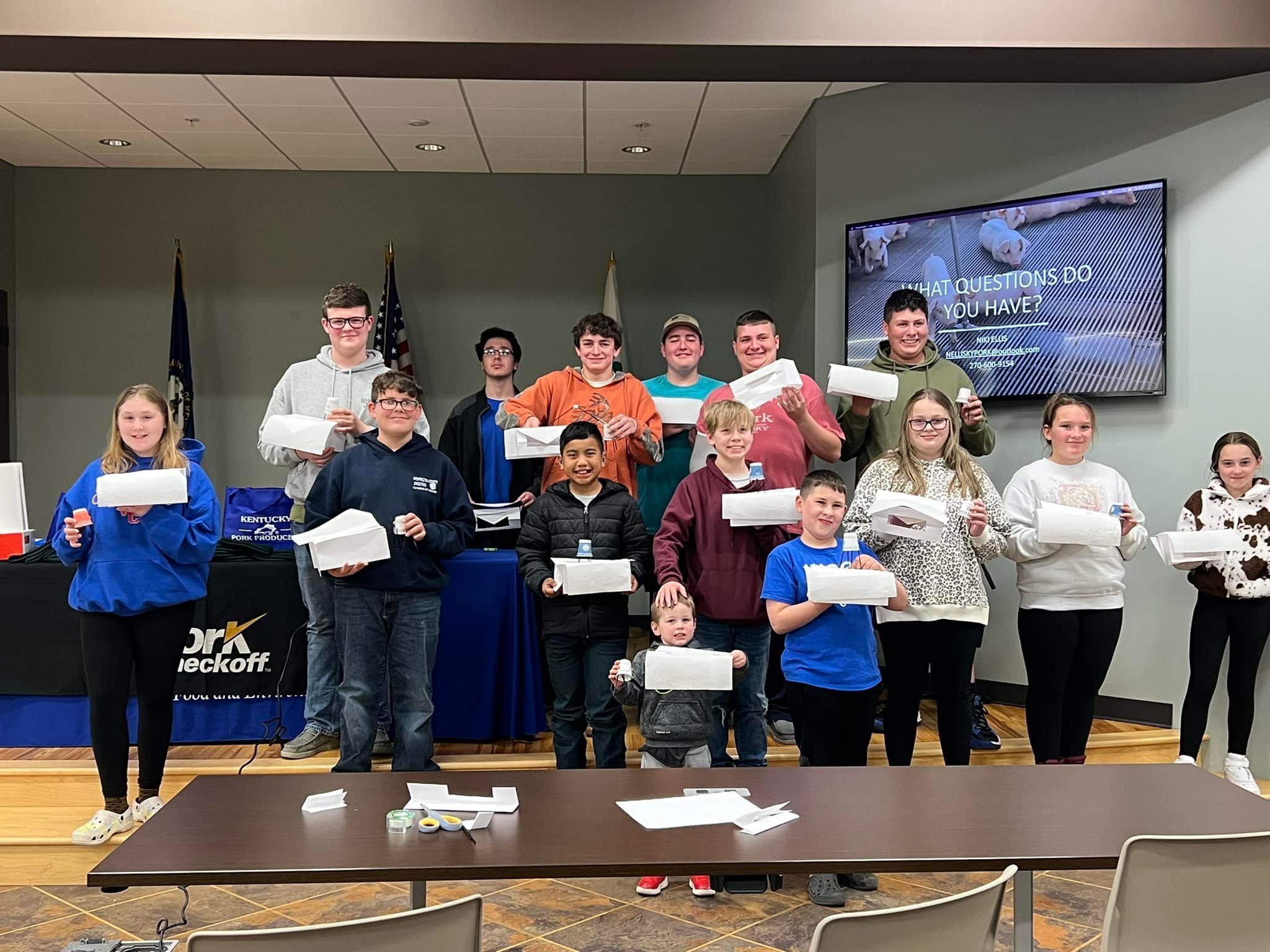Create a Modern Pig Barn
Adapted from Ohio Pork Producers - www.ohiopork.org. Demonstration video is below.
Objective
To have students explore how to best care for animals, then create a modern pig barn where the animals’ needs are met in a safe and comfortable environment.
Kentucky Academic Standards
3-6 SCIENCE
Engineering - ETS1.B: Developing Possible Solutions
Interdependent Relationships in Ecosystems
LS4.C: Adaptation - For any particular environment, some kinds of organisms survive well, some survive less well, and some cannot survive at all. (3-LS4-3)LS4.D: Biodiversity and Humans-Populations live in a variety of habitats, and change in those habitats affects the organisms living there. (3-LS4-4)
Organisms can survive only in environments in which their particular needs are met. A healthy ecosystem is one in which multiple species of different types are each able to meet their needs in a relatively stable web of life. Newly introduced species can damage the balance of an ecosystem. (5-LS2-1)
LS2.A: Interdependent Relationships in Ecosystems
Organisms, and populations of organisms, are dependent on their environmental interactions both with other living things and with nonliving factors. (06-LS2-1)
In any ecosystem, organisms and populations with similar requirements for food, water, oxygen, or other resources may compete with each other for limited resources, access to which consequently constrains their growth and reproduction. (06-LS2-1)
Growth of organisms and population increases are limited by access to resources. (06-LS2-1)
Materials
4 business size envelopes
1 paper towel
2 toilet paper rolls
2 straws, cut in 8 equal pieces
1 plain piece of paper, cut in ½
Scissors
Scotch Tape
Markers for decorating (optional)
Extra paper for making fencing, pipes, feed troughs (optional)
Procedures
Ask students to imagine that they are farmers who raise pigs. Open up a classroom discussion about how the students would take care of their pigs. You could prompt them by asking:
How will you keep the animals warm?
How will you keep them cool on hot days?
What and how will you feed the animals?
What will you do to keep your pigs healthy?
Who will keep the pigs safe from predators?
Who will take care of your pigs every day?
How do the pigs change the land or air in which they live? (soil, odor?)
Can the environment (weather) hurt pigs?
What other needs do the pigs have? How will you take care of these needs?
Note the student answers on the white board / Smartboard / post-it paper.
Have students watch the first few minutes of this video and ask them to write down what Kentucky farmer Caleb Ragland says are important considerations for taking care of pigs and producing safe food.
Explain and prompt students in making their own pig barn.
Barn: Cut an oval hole in one envelope making a large side window for the barn. (ventilation)
Take ½ of paper towel and tape it on top of the window for the curtain.
Cut another envelope in half for ends of the barn.
Tape ends of the barn to the “sides of the barn” envelopes, one of which has the hole for the window with the paper towel curtain, so that you have four sides, or a rectangle.
Use the final envelope as the roof by creasing it lengthwise in½ and attaching it with tape to the top of the rectangle.
Food Storage: Tape four straws, or legs, to each toilet paper roll so that the structure will stand on the legs.
Use a ½ of a piece of paper, and make a cone shape by twisting and taping the ends. Tape the cone shape on the end of the toilet paper roll without the straw legs.
Use the other ½ piece of paper to make another, smaller cone shape and tape it between the straw legs on the other end of the toilet paper roll.
Allow students time to be creative and make fencing inside the barn, pipes to carry feed, feeders, or water troughs.
Students can decorate their creation as they wish or add their own innovations to the structure.
Encourage students to share their creation with the rest of the class.
Have students explain the following aspects of their structures
Ventilation
Water
Feed
Protection from predators
The Kentucky Pork Produces used this lesson with a local livestock 4-H club.



